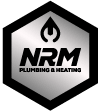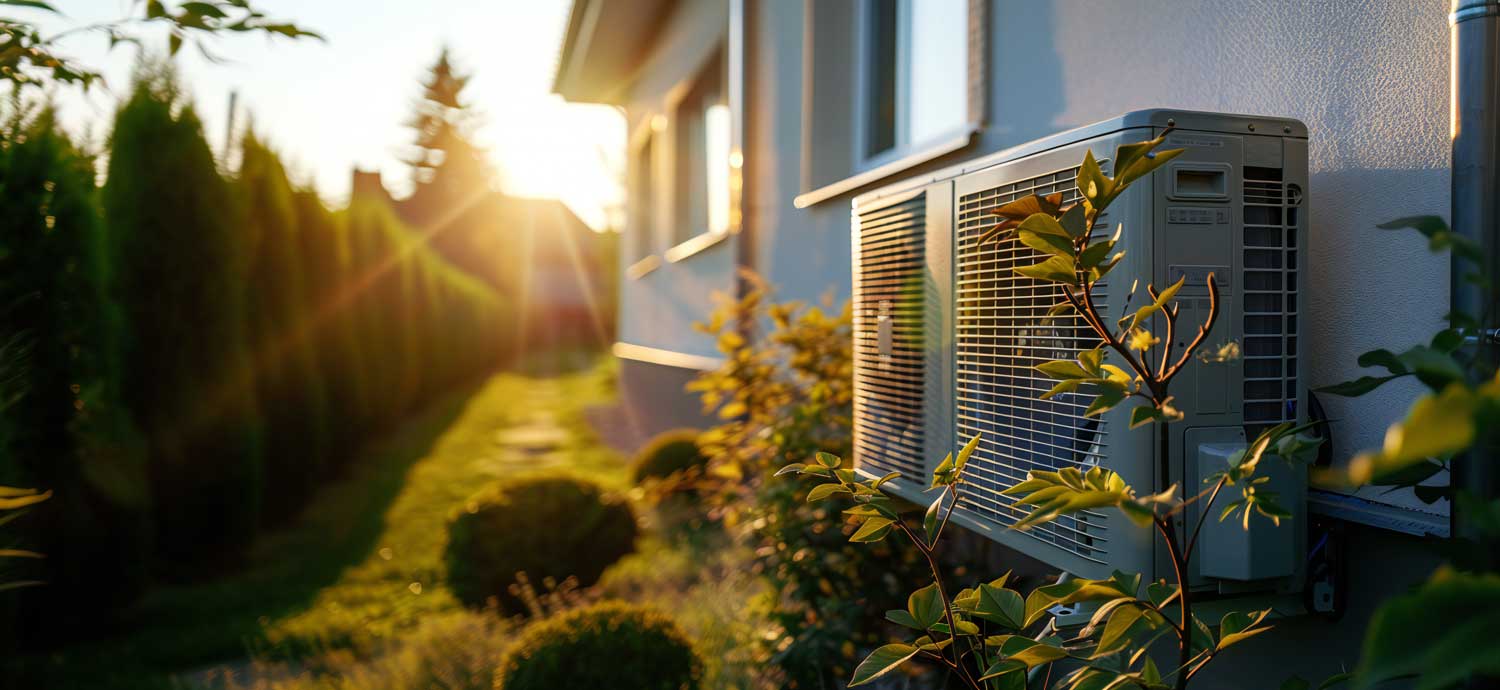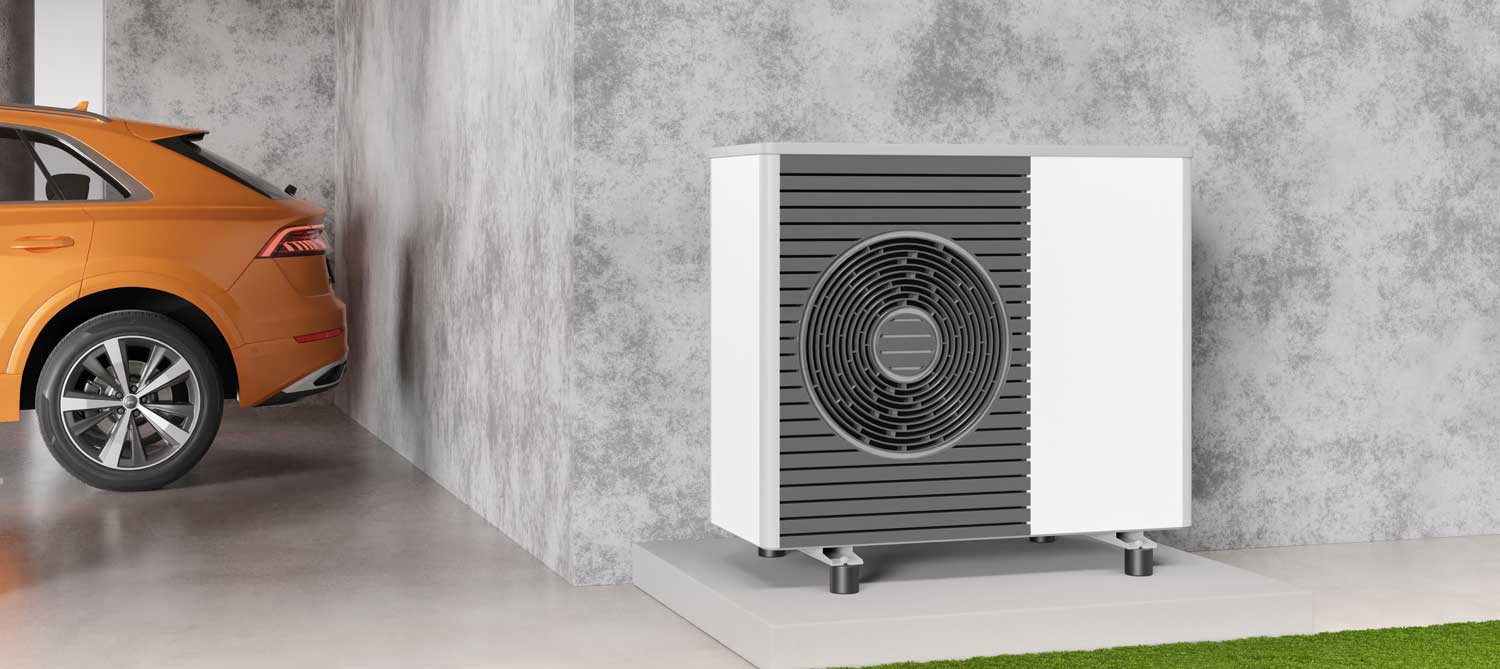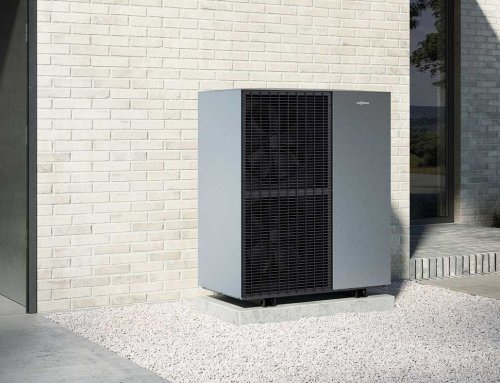Table of Contents
- Advantages of Installing Air Source Heat Pumps
- Understanding How Air Source Heat Pumps Operate
- Key Considerations, for Air Source Heat Pump Installation
- The Process of Setting Up
- Frequently Asked Questions
Air Source Heat Pump Installation – Air Source Heat Pump Installation, Air source heat pumps have become increasingly popular in years, as an energy-efficient option for heating systems. These modern systems function by extracting heat from the air and channelling it into your home offering a cost environmentally friendly solution to maintain a cosy living environment.
Fundamentally air source heat pumps operate based on the principle of transferring heat. They utilise a refrigerant to capture warmth from the air in cooler conditions and then compress and transport that warmth indoors. This process is highly effective enabling air source heat pumps to provide heating performance while consuming energy compared to traditional heating methods.
Advantages of Installing Air Source Heat Pumps
One of the advantages of incorporating an air source heat pump is the enhancement in energy efficiency (More info on – Boiler Replacement Dublin). These systems feature a Coefficient of Performance (COP) indicating their ability to produce heat energy than the electrical energy they utilise. This efficiency results in decreased energy usage, a common feature of air-to-air heat pumps. Reduced operational expenses, ultimately helping you cut down on your heating costs over time.
Apart from the benefits, air-source heat pumps also contribute positively to the environment by leveraging renewable energy sources. By opting for electricity, over fuels, these systems reduce carbon emissions promoting a more sustainable future. With governments prioritizing the shift towards energy many are offering grants and incentives to promote the use of air source heat pumps making them an appealing investment for homeowners.
Another attractive feature of air source heat pumps is their versatility. Unlike heating systems that solely provide warmth air source heat pumps can double up as cooling systems in the months (More info on – What Is The Best Heating System For A House In Ireland ?). This dual functionality eliminates the need for heating and cooling units saving space and offering an all in one solution. Whether you reside in a house, apartment or commercial property an air source heat pump can be customised to suit your heating and cooling requirements.
Understanding How Air Source Heat Pumps Operate
To comprehend the functioning of air source heat pumps it’s crucial to grasp the principles of heat transfer, which is fundamental to understanding how this type of heat pump operates. Heat naturally moves from temperature areas to lower temperature areas and air source heat pumps utilise this process to deliver warmth, to your living space.
The procedure kicks off with the air source heat pump’s indoor unit housing a heat exchanger coil and a fan.
When the fan pulls in air from its surroundings the refrigerant, inside the coil absorbs the heat energy from the air. When it’s chilly outside there’s still some heat that can be taken out and used.
After absorbing the heat the refrigerant gets compressed by a compressor in the unit. This compression raises its temperature making it possible to transfer the captured heat into your home effectively.
The heated refrigerant then moves to the unit, which usually includes a heat exchanger and a distribution system. Here the heat is released into either air or water based on what type of system is set up. The warm air or water is then circulated throughout your home using air ducts, radiators or underfloor heating to ensure a uniform spread of warmth (More info on – What Is The Best Heating System For A House In Ireland ?).
In air source heat pump systems, those designed as air-to-water models, this heat can also be utilised for generating hot water for domestic use, showcasing the versatility of air-to-water heat technology. The heat pump efficiently warms up water stored in a cylinder that can then be used for household tasks, like showers, laundry, and cleaning, demonstrating the utility of air-to-water heat technology (More info on – Air to Water Heat Pumps).
Key Considerations, for Air Source Heat Pump Installation
When thinking about installing an air source heat pump there are factors to consider to ensure it works efficiently and effectively.
Firstly the suitability of your home is crucial. Air source heat pumps perform best in insulated houses because good insulation reduces heat loss and helps the system work effectively. Checking the insulation levels of your walls, roof and windows is vital to determine if your home is a fit for an air-source heat pump.
The size of your property also matters when choosing the right air source heat pump, depending on the type and specifications. It’s important to select a system that’s correctly sized to meet your heating and cooling needs. A heat pump that’s too small may struggle to keep temperatures comfortable while one that’s too large can result in inefficiencies and higher operating costs. A professional installer can assist you in determining the size based on your property’s requirements, especially if you’re looking to install a heat pump.
Additionally, consider how compatible an air source heat pump is with your heating system. Some homes might need adjustments or upgrades for the installation, such as modifications to pipework or radiators, especially when integrating systems like water source heat pumps.
In homes, you might need to upgrade your radiators to larger ones, for better heat distribution efficiency when installing a heat pump. Your heating technician can inspect your setup, providing the opportunity to discuss retrofitting your home with a more efficient ground source or air-to-water heat pump system. Provide guidance on any necessary changes, potentially including the retrofit of an air-to-water heat pump for improved efficiency.
When selecting an air source heat pump you’ll also have to choose between an air-to-water or an air-to-air system. Air-to-water pumps work well for properties with heating systems as they can easily connect with radiators or underfloor heating (More info on – Beginner’s Guide to Air to Water Heating Systems). On the other hand air to air pumps are suitable for homes without a system delivering warm or cool air directly through ducts or wall-mounted units.
The location of the unit is another factor to consider. Placing it correctly ensures performance and efficiency while reducing noise disturbance. Its best placed where there’s airflow and minimal obstructions away, from bedrooms or neighbouring buildings. Also, consider how the unit looks aesthetically and make sure it blends in well with your property’s design.
Lastly, think about how the air source heat pump will fit in with your existing heating setup.
Assess the compatibility, with radiators and underfloor heating as certain systems might need adjustments to function efficiently with the reduced water temperatures generated by heat pumps (More info on – Underfloor Heating Systems Dublin). Sometimes upgrades, like swapping out radiators or setting up underfloor heating could be needed to enhance the effectiveness of your air source heat pump.
Air Source Heat Pump Installation – The Process of Setting Up
Setting up an air source heat pump typically involves steps to ensure a smooth and effective process, highlighting the importance of a detailed installation process.
To begin with, a comprehensive site survey and evaluation are conducted by a heat pump installer. They assess the suitability of your property for an air source heat pump taking into account factors, like insulation levels, property size and existing heating system. This assessment helps determine the size and setup for your requirements.
After analyzing the survey results, the installer moves on to designing and specifying the system, which may include applying for a heat pump grant through SEAI for financial assistance. This includes choosing the air source heat pump model and planning the distribution system tailored to your property. The design considers aspects such as room sizes, desired temperatures, and any special preferences you may have, with an emphasis on selecting the right type of heat pump.
Once the design is finalised installation work can start. The outdoor unit is mounted in a chosen spot by the installer to ensure placement for performance. Following this they install the unit. Connect it to the distribution system using methods like air ducts, radiators or underfloor heating.
Additionally during installation connecting the air source heat pump, to the supply is a part of ensuring functionality.To ensure the compliant wiring of the air source heat pump it’s important to engage an electrician with expertise in this area.
Once the installation is finished the installer will conduct commissioning and testing procedures to confirm that the heat pump is operating efficiently and as intended. This process involves starting up the system, configuring its settings, and conducting performance tests to optimise its performance, which is a key part of the installation process for heat pumps. Any necessary adjustments will be made to guarantee optimal system functionality.
For maintenance and care of your air source heat pump regular servicing is crucial. Most manufacturers recommend a service to maintain peak performance levels and prevent any issues from arising.
During a maintenance check up a skilled technician will meticulously inspect the system for any signs of wear or damage. They should also, replace filters as needed since dirty filters can obstruct airflow and reduce efficiency. Additionally, the technician will assess levels, electrical connections and other critical components to ensure everything is operating properly.
Apart, from maintenance services there are some tasks that you can do yourself to uphold your air source heat pumps top-notch condition.
Regularly maintaining or changing the air filters keeping the unit clear of debris and ensuring that the air vents remain unblocked all play a role, in enhancing the efficiency and lifespan of the system.
Opting for an air source heat pump also comes with added peace of mind thanks to the warranties provided by manufacturers and support from installers. Reputable manufacturers typically offer warranties that cover the system components and performance for a duration. Moreover, your installer should offer assistance and aftercare services to promptly address any concerns or issues.
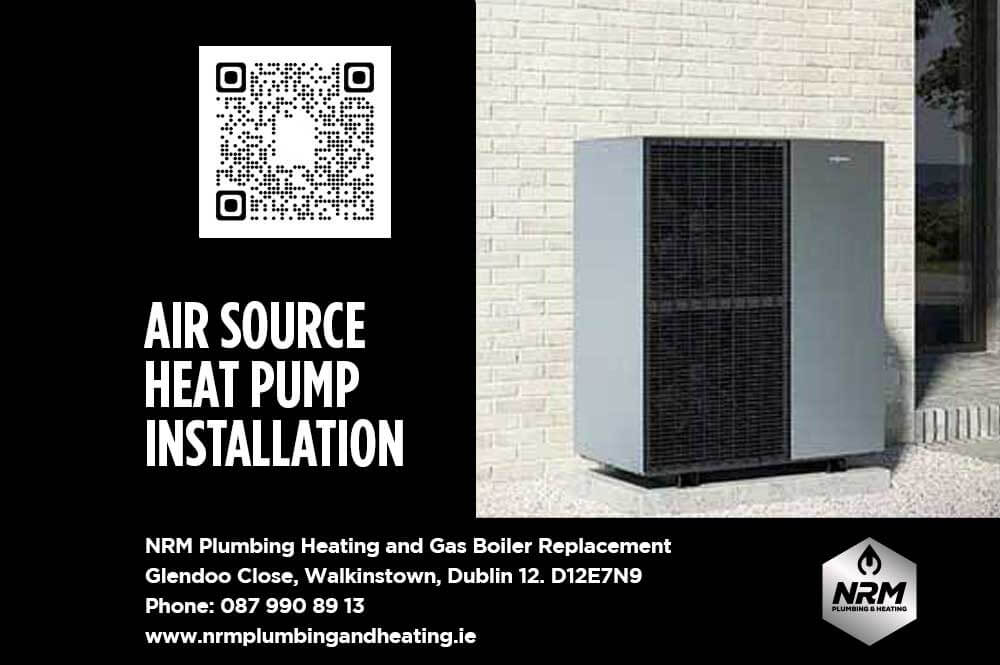
Image credit: www.viessmann.co.uk
Air Source Heat Pump Installation – Frequently Asked Questions
1. Do air source heat pumps produce noise?
Modern air source heat pumps are designed to operate producing noise levels to that of a refrigerator. However, where you place the outdoor unit can impact how loud it seems, so it’s advisable to position it away from areas like bedrooms or neighbouring properties, especially when installing a type of heat pump like air-to-water models.
2. Can air source heat pumps function well in climates?
Yes, air source heat pumps can effectively work in climates by extracting heat from the air when temperatures drop as low, as 15°C. Nonetheless, in certain conditions, the pump’s efficiency may decrease, necessitating a backup heating system.
3. How many years do air source heat pumps last?
With upkeep and attention, an air source heat pump can endure for around 15 to 20 years, often supported by SEAI grants for those who choose to install renewable energy solutions. Sometimes even longer. Regular maintenance and addressing any issues promptly can help prolong the life of the system, a crucial step for anyone who has invested in retrofitting their home with a heat pump.
Are air source heat pumps costly to operate? Although air source heat pumps may have expenses compared to traditional heating systems they are generally more economical to run due, to their high efficiency. The specific operating costs will vary based on factors such as electricity rates, the efficiency of the heat pump model and the insulation levels in your home.
Can I connect an air source heat pump with my radiators, and is it eligible for any renewable heat incentives or grants? In some instances, air source heat pumps can be compatible with existing radiators. However, since heat pumps typically function at temperatures than boilers it might be necessary to swap out some radiators with ones for efficient distribution of heat. Your installer can evaluate your setup. Recommend any needed adjustments.
Air source heat pumps present an option, for homeowners looking for a cost-effective and eco-friendly method of heating their homes. Air source heat pumps are gaining popularity among households due, to their energy efficiency, cost-effectiveness and ability to provide both heating and cooling solutions. Before installing one it’s important to plan and consider factors like property suitability, system size and integration with existing heating systems. Working with an installer can ensure a trouble-free process.
In place, an air source heat pump offers heating and cooling promoting a more environmentally friendly future. Government incentives and potential long-term energy savings make this technology attractive to homeowners seeking an upgrade, in their heating systems (More info on – Tips to Increase Boiler Efficiency).
Considering the benefits of an air-source heat pump? It’s worth exploring this option by teaming up with an installer and selecting a high-quality system for your home. By opting for this option you’re not just benefiting your home and finances. You’re also playing a part, in creating a greener more sustainable tomorrow for generations.
Related search terms: heat pump, air source heat pump, air source heat, air source heat pump installation, heat pump installation, heat pump, air source heat pump, air source heat, air to water heat pump, air to water heat, installation process, full installation, heat pump installation, heating system, heat pump system, install a heat pump, heating system, install a heat pump, installer, heat pump installer, heating system, boiler, type of heat, type of heat pump, hot water tank, hot water tank, heat pump for your home, heat pump installed, installation cost, indoor air, outdoor air, geothermal heat, air quality, heat pump costs, ground and water source heat, energy bills, using heat, hot water cylinder, cost of installing, need to install, heat pumps require, heat pump you choose, outside air, heat from the outside, 4 units of heat, used to heat water, using heat pumps, initial cost, depending on the heat, heat pumps include, air-source heat pumps, heat loss indicator, cost of installing a heat, pump will need, complexity of the installation, works by extracting heat, heat from the air outside, type of air source heat, heat from the outdoor air, energy from the ground, money on your energy bills, heating and cooling functions, domestic hot water, heating solutions, heat pump uses, hot air, apply for a grant, solar thermal, improper installation, efficiently at lower temperatures, days to install, may need to install, know exactly what to expect, airflow with minimal obstructions, size of your home, depending on the complexity
Ever wondered about Viessmann Heat Pumps….Check out our latest blog post for details.
